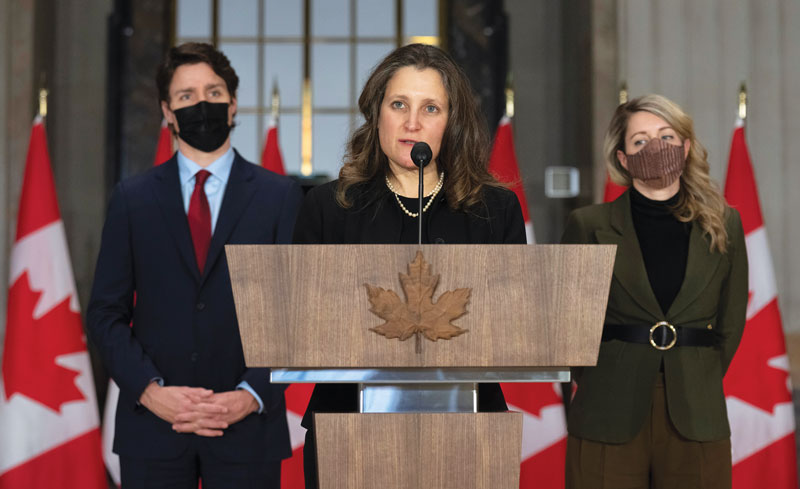
Canada’s 2022 federal budget promised $8billion more for defence- but is it enough?
The Russian invasion of Ukraine that began on February 24 will alter world affairs as profoundly as the invasion of South Korea by North Korea in June of 1950. Declaring Ukraine to be an artificial nation—despite Russian recognition of Ukraine as a sovereign country in 1991—Russian President Vladimir Putin unleashed some 175,000 troops, backed by his country’s air force and weaponry might, to conquer Ukraine and remove its democratic government.
When the Western world faced Communist aggressions in Korea in the 1950s, the United States, Britain, Canada and the rest of NATO reacted dramatically, convinced that the invasion was but a feint for further aggression in Europe. The Canadian defence budget doubled in four years. The size of the country’s military increased from just less than 60,000 troops in 1950 to more than 100,000 in 1955. As Canada had spent the interceding years recovering from the Second World War, the stresses of building a combat-ready fighting force put an enormous strain on the country’s economy. Measures not related to war were reduced so that new defence spending would not cause runaway inflation.
Contrast Canada’s Korea response to the federal budget released on April 7. Despite characterizing Putin and the Russian government as “war criminals” and declaring that the “world’s democracies…can be safe only once the Russian tyrant and his armies are entirely vanquished,” Finance Minister Chrystia Freeland announced that the Canadian defence budget—previously 1.39 per cent of the country’s gross domestic product (GDP)—would be increased by $8 billion by 2027, equivalent to about 1.5 per cent of GDP. That’s still well below NATO’s standard of two per cent.
In the weeks following Russia’s invasion of Ukraine, Defence Minister Anita Anand and Foreign Affairs Minister Mélanie Joly had repeatedly called for large increases in defence spending, hinting at sums similar to those announced by Germany, which has committed to increase its defence budget by 100 billion euros to reach the NATO target as soon as possible. But that was not to be. The spending increase was but a fraction of the defence budget already announced by the government.
Freeland did proclaim that a new defence review would be conducted to establish priorities based on Russia’s actions this year, but current gaps in Canadian military goals are so glaring that some, at least, could have been addressed in the budget. There was no mention of under-ice submarine capabilities, heavy icebreakers or strengthening the chronically undersized Canadian Armed Forces. New money was set aside to modernize North American air defences, but nothing to give the army an air defence capability, upgrade its decades-old Griffon helicopters or provide the navy with additional replenishment and oiler ships.
And what should be expected from a defence review, anyway? Like the recent new fighter jet competition, will it take more than half a decade to tell us what almost everyone else already knew—that the best fighter available was the F-35?
In fairness, the invasion of Ukraine came as a surprise to the government, giving it little time to shoehorn even a modest increase in defence spending into the 2022 budget. But the numbers still don’t amount to much.
Russia has proven that its foreign and defence policy is now backed by extreme violence: that it will, when it can, resort to armed force and even perhaps war crimes to achieve its objectives. At present, those plans seem evident: bring as much of the old Russian Empire back into its fold as possible; deal with other countries from a position of brute strength backed by a nuclear arsenal; and, of particular concern to Canada, conceivably take Arctic territory beyond its current boundaries, including seabed resources. This is not business as usual. It’s time to pay up.
Advertisement













